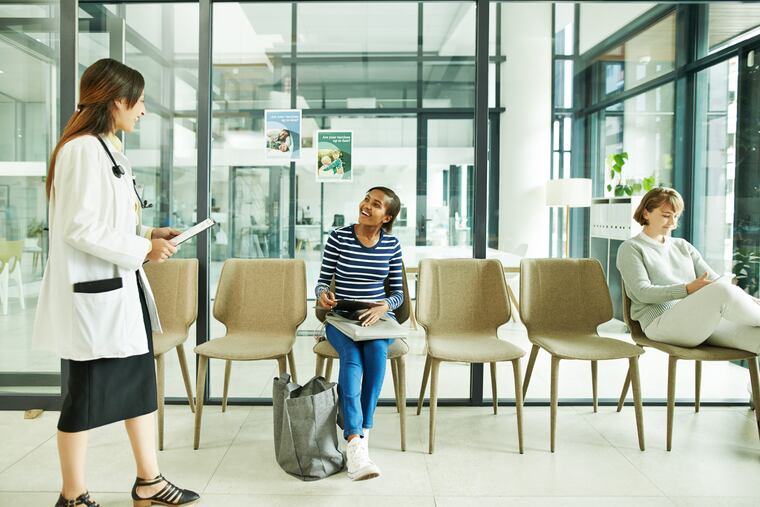How will doctor’s offices ever catch up from COVID-19 closures? | Expert Opinion
Certainly, we must prioritize the acute medical problems and COVID-19′s risks to public health. But the logjam of non-urgent cases will quickly become a big problem for our health system.

When the COVID-19 crisis emerged, we closed down our clinics and decided that all non-urgent patients should not be seen in person, given the importance of social distancing to reduce patient and staff risk. And given scarcity of resources, we had to ensure supplies and personnel were available for the patients that needed them most.
Certainly, the pandemic has prompted a focus on insufficient hospital beds, personal protective equipment (PPE), and ventilators to handle the strain on the health system. But it’s just as important to recognize the indirect effects on regular practices. How is this affecting all of our patients without COVID-19?
Months later, my outpatient dermatology clinic is slowly starting to open. Though we are only now starting to see more people in person, over the last few months, we have tried to maintain care mostly by seeing non-urgent patients through telemedicine: virtual video visits and photo messages over our patient portal. And our department helped in other ways, for instance, by sharing patient’s COVID-19 test results over the phone.
» READ MORE: Penn doctor explains advantages — and pitfalls — of telemedicine | 5 Questions
An increase in hospital visits for any reason has an effect on hospital and medical access for everyone. But what about the people who should be seeking medical care yet aren’t? For example, because of COVID-19, if a patient with a skin infection is too scared to visit the ED, there might be severe consequences. Or if that patient did show up to the ED, he might not get the same level of care that he needed. The downstream effects of this crisis run deep.
And what happens to my non-urgent dermatology patients whose appointments were cancelled? Fortunately, most dermatology care in the U.S. is non-urgent. But just because some clinical care and surgeries are called elective doesn’t mean they are unnecessary. It just means the timing is flexible. That means it is acceptable, if not ideal, to delay these procedures temporarily. But at what point do deferred non-urgent problems become urgent? Putting off a skin cancer check shouldn’t be that big of a deal, ordinarily. But what if you’re a patient with a history of multiple melanomas? In such high risk patients, visits may be for surveillance, but it’s not a matter of if there will be a new problem, it’s when. What if my patient develops a new melanoma, but the diagnosis is delayed because of the coronavirus shut down? If that melanoma spreads, the patient’s survival rate could fall dramatically.
» READ MORE: Doctors’ offices are reopening. Why you might want to visit virtually as COVID-19 continues. l Opinion
How will we ever catch up? What happens as we try to re-open our clinics? Not only is it a struggle now to manage patients, already I anticipate a bottleneck effect forthcoming. After a couple months, the list of patients waiting to schedule appointments grows longer and longer. For elective surgeries, well checks, and other outpatient visits, what will this mean in terms of meeting our patients’ needs?
Another compounding factor is that many outpatient medical practices are struggling to stay afloat. Given the shutdown, many practices have been forced to lay off employees, and like any business with a lack of incoming revenue, may be at risk for having to close completely. So as we reopen our clinics, not only will there be a bottleneck of patients waiting for months, but also there will likely be fewer clinics to accommodate this larger number of people. Further still, social distancing limits our ability to see patients at our pre-COVID-19 full capacity – even with universal masks, we can’t be packing people into waiting rooms and clinic rooms.
Certainly, we must prioritize the acute medical problems and COVID-19′s risks to public health. But the logjam of non-urgent cases will quickly become a big problem for our health system. For now, I’m thankful that telemedicine has allowed me to remotely manage many urgent cases adequately, even as we start to ramp up in person care again. I can do a video visit with a patient and then decide if an in-person evaluation might be necessary. And this remote care ensures that more PPE is available for in-person care and more beds are available in emergency departments. Yet, even as I feel more and more confident that my urgent non-COVID-19 patients are getting the care they need, I remain concerned about the backlog.
I look forward to when my days will be filled mostly by seeing patients in person for non-urgent problems. But for now, we must be cognizant of both the direct and indirect effects of COVID-19 upon ordinary outpatient practices, and help our patients in any way we can.
Jules Lipoff is an assistant professor of dermatology at the University of Pennsylvania Perelman School of Medicine.